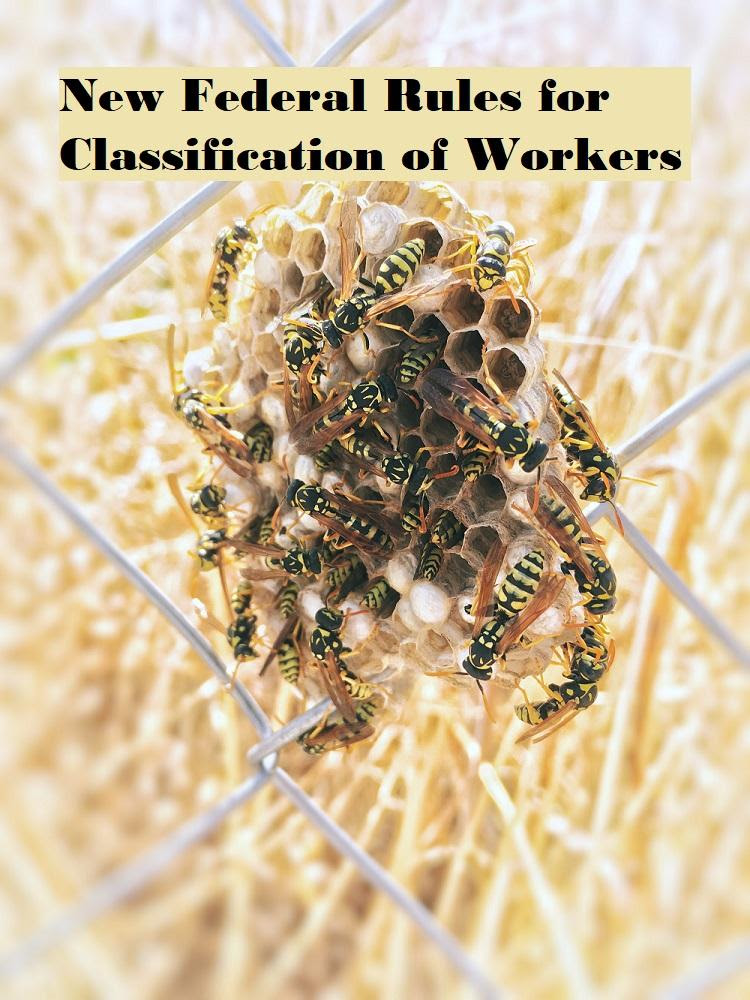Earlier this month, the US Department of Labor (“DOL”) published a final rule simplifying the standards relating to the classification of workers as employees or independent contractors.
Under the new DOL regulations, which are to take effect in March, “the ultimate inquiry is whether, as a matter of economic reality, the worker is dependent on a particular individual, business, or organization for work (and is thus an employee) or is in business for him- or herself (and is thus an independent contractor).”
The DOL lists several factors to be considered, two of which are called “core factors” and carry greater weight than the other factors.
1. The nature and degree of the worker’s control over the work; and
2. The worker’s opportunity for profit or loss based on initiative, investment, or both.
The first core factor weighs towards workers being employees when their employers exercise substantial control over key aspects of the performance of the work, such as by controlling the workers’ schedules or workload.
Conversely, workers are more likely to be classified as independent contractors when they exercise substantial control over such aspects.
The second core factor weighs towards workers being employees when they either have no way to affect their earnings or the only way they can do so is by changing the number of hours they work or the speed with which they work.
On the other hand, when workers have the opportunity to earn profits or incur losses based on the exercise of their own initiative or management of their personal investments in or capital expenditures (e.g., hiring workers or buying equipment), workers are more likely to be found to be independent contractors.
The other three factors described by the regulations are:
1. The amount of skill required for the work. When the work at issue requires specialized training or skill that the employer does not provide, this leans toward a worker being an independent contractor.
2. The degree of permanence of the working relationship between the individual and the potential employer. A longer-term relationship is more likely to be an employer-employee arrangement.
3. Whether the work is part of an integrated unit of production. This factor considers whether workers depend on the overall production process to perform their work duties. Editors, for example, are usually involved in the entire production process, from assigning articles to determining layout, and their work is dependent on constant coordination with other employees. Freelance journalists, on the other hand, typically communicate with one point-person and write discrete stories, so their work is not part of an integrated unit of production.
The DOL will no longer consider the importance of the work to the employer’s business.
This new rule applies only to worker classification issues under the Fair Labor Standards Act (FLSA), that is, the federal wage and hour laws. Tests used under state laws, by the IRS, or by other agencies are not affected.
These new regulations are set to take effect on March 8, though it is possible that the Biden administration will withdraw the regulations or that Congress will intervene before they take effect.
President Biden has previously stated that he favors the “ABC” test, which assumes workers are employees unless the employer shows that the worker is free from the employer’s control and direction, the work is outside the usual course of the employer’s business, and the worker is customarily engaged in an independently established trade, occupation, profession or business.
Whether you are an employee or an employer, please feel free to contact us if you have any questions about worker classification or any other employment-law issues.
For more information about employment law, see Employment Law (in Plain English)®, co-authored by members of this law firm. The book is available through Skyhorse Publishing, Amazon, Barnes & Noble, and Bookshop (an online bookstore that allows you to support your favorite independently owned bookstore).
Photo by Enrique Vidal Flores on Unsplash.jpg






